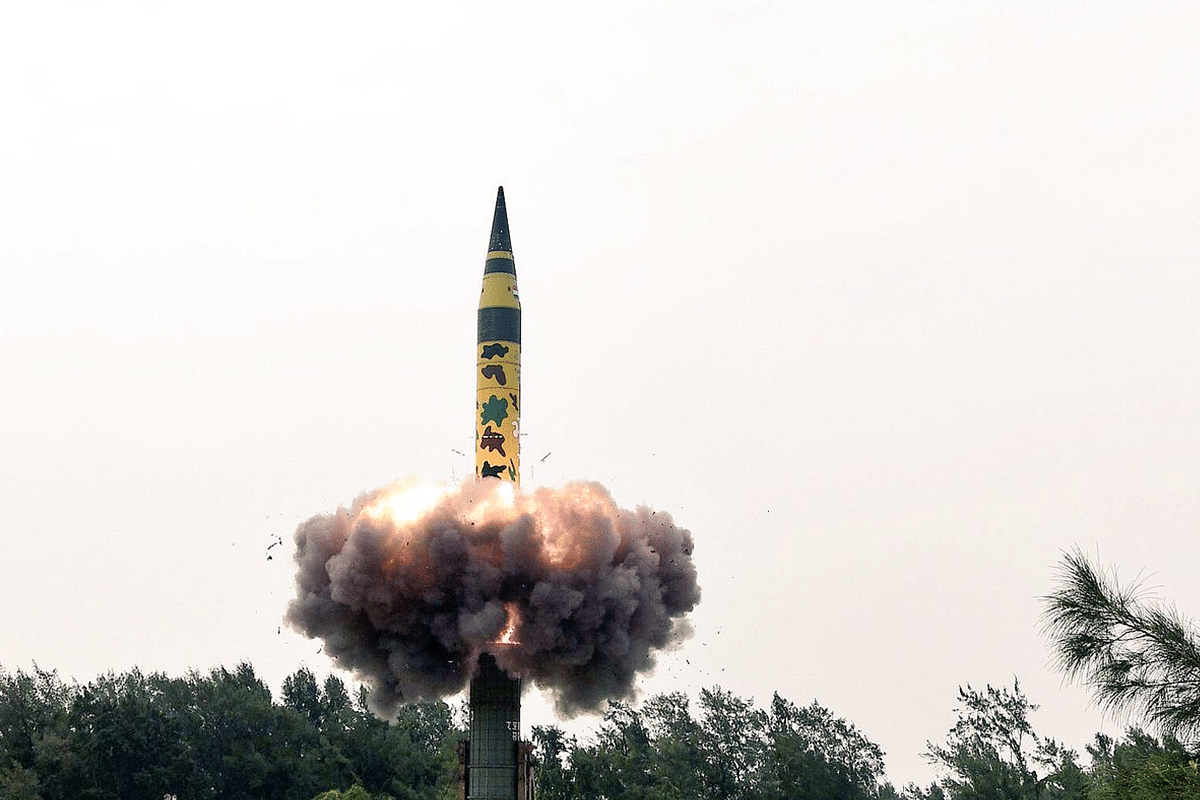News Brief
India To Test Agni-V With Tech To Deliver Multiple Nukes To Different Targets; First User Trial This Month: Report
- MIRVs allow a missile to deliver multiple nuclear warheads to different targets.

Agni-V missile. (DRDO)
The Strategic Forces Command, responsible for the management and administration of India's nuclear weapons, is preparing to test-fire intercontinental-range ballistic missile (ICBM) Agni-V.
The test launch, which will be the first user trial of the missile, could take place on 23 September, the New Indian Express has reported.
An area warning for a 3,000 kilometre-long-zone in the Indian Ocean issued by India for the launch of an experimental flight vehicle also suggests the launch window could be between 23 and 24 September.
The 5,000-km-range Agni V was to be inducted into service in 2020, after three trials conducted in 2018.
However, the process was retarded due to the Covid-19 pandemic, which delayed some pre-induction tests.
The induction of the Agni V missile will bring Beijing and many other critical Chinese cities within the range of Indian land-based nuclear weapons for the first time, establishing a credible nuclear deterrent.
Chinese experts have claimed that the actual range of the missile could be around 8,000 km and suggest that India has "deliberately downplayed the missile's capability in order to avoid causing concern to other countries."
Agni-V to be MIRVed
The missile will be test-fired with multiple independently targetable reentry vehicles or MIRV technology, the report says.
Developed in the early 1960s, MIRVs allow a missile to deliver multiple nuclear warheads to different targets. While traditional missiles can carry one warhead, a MIRVed one can carry multiple warheads.
"Warheads on MIRVed missiles can be released from the missile at different speeds and in different directions. Some MIRVed missiles can hit targets as far as 1,500 kilometres apart," a factsheet on the website of the Center for Arms Control and Non-Proliferation says, adding, "It requires the combination of large missiles, small warheads, accurate guidance, and a complex mechanism for releasing warheads sequentially during flight."
India tested indigenous MIRV technology in Agni P missile, flight-tested in June, the New Indian Express report says, citing sources.
While the US, Russia, France, the UK and China use MIRV technology, Pakistan reportedly tested it in January 2017 onboard its Ababeel medium-range ballistic missile, which has a reported range of 2,200 km.
Pakistan Army's claim that the Ababeel missile uses MIRV technology remains unverified and has been a point of debate among experts.
Also Read: Why The Agni-V Is A Game Changer For India
Support Swarajya's 50 Ground Reports Project & Sponsor A Story
Every general election Swarajya does a 50 ground reports project.
Aimed only at serious readers and those who appreciate the nuances of political undercurrents, the project provides a sense of India's electoral landscape. As you know, these reports are produced after considerable investment of travel, time and effort on the ground.
This time too we've kicked off the project in style and have covered over 30 constituencies already. If you're someone who appreciates such work and have enjoyed our coverage please consider sponsoring a ground report for just Rs 2999 to Rs 19,999 - it goes a long way in helping us produce more quality reportage.
You can also back this project by becoming a subscriber for as little as Rs 999 - so do click on this links and choose a plan that suits you and back us.
Click below to contribute.
Latest